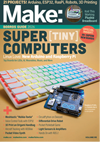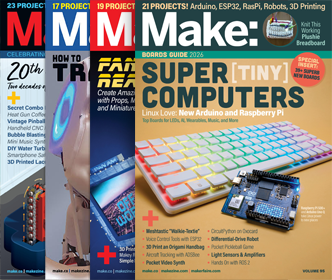

This is a tutorial on how to make a silicone mold of a hollow, spherical form. It is part of a larger project, so I hope the reader will enjoy some background information to put it in context.

Project Background
I became interested in artificial reef technology a few years ago when I met Christopher Lim, a Marine Biologist and Living Shorelines Program Manager at The Watershed Project, a Richmond, California-based nonprofit organization. The Watershed Project’s mission is to inspire Bay Area communities to understand, appreciate, and protect our local watershed. Last year, Lim built a 100-unit concrete artificial oyster reef at Point Pinole with the aid of community volunteers.
Last summer, Lim and I initiated a collaboration creating a design for two new artificial oyster reefs at Point Emery and Point Molate. The impetus for these kinds of habitat restoration projects is that oysters are a cornerstone species in the bay ecosystem. They improve water quality through filtration, and provide habitats and food for other species. The native Olympia Oyster was once much more numerous in the bay, but its habitat was undermined by sedimentation from agricultural and industrial development. Mud gradually covered up much of the hard substrate oysters require for attachment. Our goal is to replace that lost hard substrate. Oyster reef restoration also helps to mitigate erosion tidal surges in our bay caused by climate change.

The Model
I designed an artificial reef unit in Rhino and printed it on a ZCorp 3D printer. The complex, hollow geometry of the unit was particularly well-suited to printing on a powder bed/inkjet head machine, since it requires no support material. ZCorp printers work by printing binder into a bed of powder, layer by layer. With each pass, the powder bed lowers, a new layer of powder is added, and the inkjet head prints another layer of the part. The powder not hardened by the binder becomes the support material. It is blown out with compressed air when the part is finished printing.
Fresh out of the machine, the part is solid, but not very strong. To be durable, it must be infiltrated. I used cyanoacrylate (super) glue for the infiltration. Although it works well to strengthen the print, it is unfortunately fairly toxic, so my safety precautions included skin, eye, and respiratory protection in a well-ventilated space. Next time, I am going to try using a solvent free, bio-derived epoxy resin.
I started with the bottom and inside, so it would be dry and wouldn’t stick to my Masonite when I flipped it to do the outside. The CA glue is a thin, low-viscosity formula which penetrates the part easily.
The Mold
Parting Line

Reproducing this form through silicone mold making and gypsum cement casting presented some unique challenges. It was necessary to design a hollow plug mold to cast the inside of the ball that would be flexible enough to de-mold the castings without breaking them. It was a good opportunity to get a difficult mold making workout.
First, I needed to establish a parting line; I wanted one half of my mold to cast the outside of the model, and the other half to cast the inside. So, I needed to devise a way to separate these two volumes of negative space. My plan was to use an inflated balloon to fill the interior volume, while I molded the outside.
I made a mold base out of plywood and Masonite, and drilled a hole in the center of it with a Forstner bit. I affixed the model to the base with two layers of double-stick tape; I use Permacel brand. I used a minimal amount of tape, since the model will have to be removed later in the molding process. I took care to center the model over the hole, inserted the balloon, and blew it up.
The result is an elegantly executed parting line. Usually, this is done with clay, which necessitates cleaning before molding the second half of the part.
Registration and Walls
Registering one half of the mold to the other was my next step. I hot glued four acrylic semi-spheres to my Masonite for this purpose.
I made my mold walls out of foam core scored halfway through and folded, then hot glued to my base. This established the outside dimensions of my mold. I usually leave about ½″ of space on all sides of the model to conserve silicone and avoid distortion while maintaining flexibility.
Pouring the First Half
Now I was ready to pour the first half of the mold. I use SR-1621, the flagship silicone from Douglas & Sturgess. It has a good balance of strength and flexibility, and has a 10:1 base to catalyst mix ratio. Silicone doesn’t usually require a release agent, but I brushed a little Vaseline on the exposed balloon in the holes in the model, just to make sure. The Vaseline also offers a little extra seal between the balloon and the model – I didn’t want rubber running inside. I used a vacuum pump to de-air my silicone, but one can usually avoid air bubbles just by pouring slowly into one corner of the mold, and letting the silicone flow over the model.
After letting the silicone cure overnight, I removed my mold walls and gently detached the model and first mold half from the base, using a putty knife.
The Second Half
Now that the first half of the mold was finished, it was time to build pour spouts out of ¼″ wax sprue and acrylic semi-spheres, apply release agent so the mold halves wouldn’t stick together, and make a new set of mold walls. I also turned myself a wood cylinder on the lathe to make the plug hollow.
Next, it was time to measure and mix my silicone, fill the inside of my model, and insert my wooden cylinder.
After another overnight cure, I removed my mold walls and the wooden cylinder.
Casting
For plaster, gypsum cement, and concrete castings, I often use canola oil spray as a release agent. It’s not always required in a silicone mold, but it helps due to the extreme undercut and lock with this model. I’m casting with FGR-95, a durable gypsum cement from USG, also available from Douglas & Sturgess. Since I’m making my material a concrete-like gray color by adding a little powdered black pigment, the slight yellowing produced by the canola oil will not be an issue.
I measure my material by sifting it into water in a neoprene bowl until islands form, so I know I have a saturated solution. I mix by hand — a heavy cream consistency is about right in this case. Using a funnel inserted into one of my pour spouts, I fill the mold until the material comes out the other pour spout, so I know it’s full.
Because the casting is potentially fragile (since it’s difficult to demold) I let it set up overnight. The cure can also be sped up by placing it in a heat box or adding aluminum sulfate accelerator.
Results

Now that I had a working mold, I could begin to visualize different arrangements of my artificial reef units in 3-dimensional materiality. I am interested in closest packing and linear arrangements, as well as stacking two layers of the modular units. Since the units are designed to be approximately 3′ in diameter, this will correspond well to a six-foot tidal range, especially in terms of erosion control at our potential reef sites.
I also learned something about production form work by working in scale. Aesthetically, I wanted an almost full sphere rather than a hemisphere. There is a functional reason for this too, related to closet packing and stability of stacked units, but the hollow interior plug may be too great a technical challenge in full-scale production, unless an inflatable bladder is devised for the inside of the mold (the outside of the full-scale mold will likely be rigid composite).
I have been working on a design for a modular, hemispherical unit that tabs together into a full sphere. Both halves will be identical, cast from a single mold.

ADVERTISEMENT














































